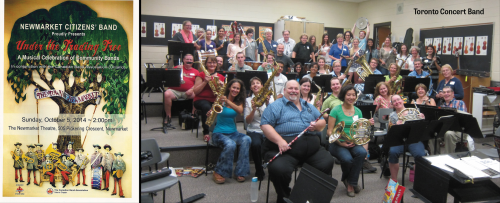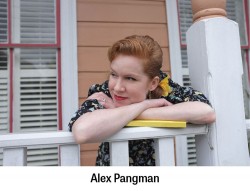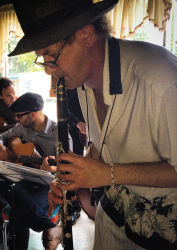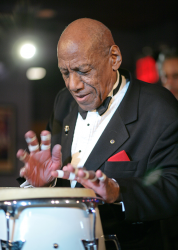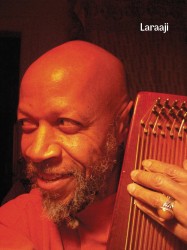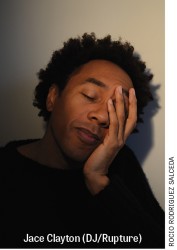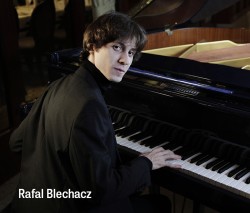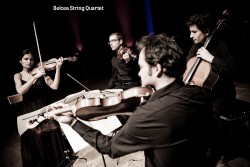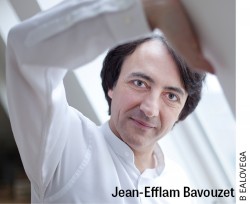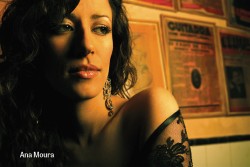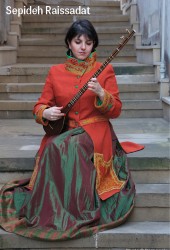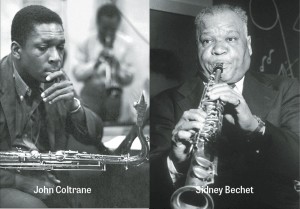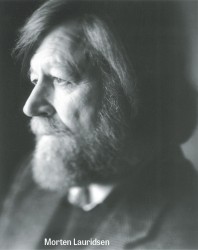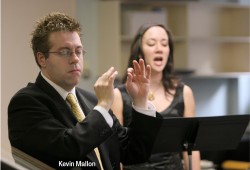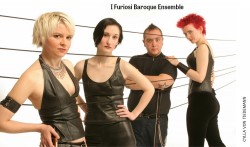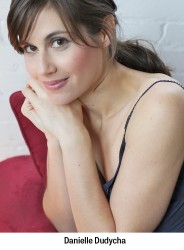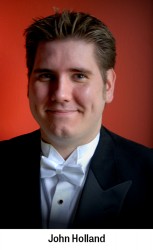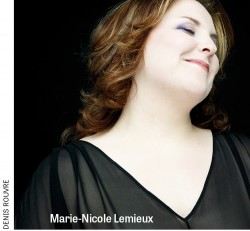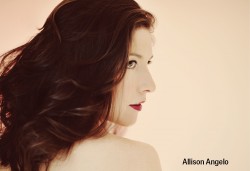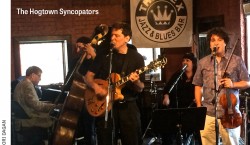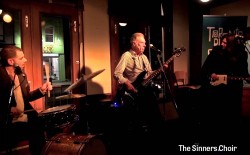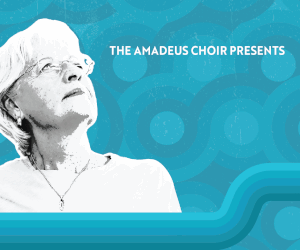The CBA in Newmarket
As I sit down to write this, summer has past, Halloween is almost here and I have already heard bands rehearsing Christmas music. So what has been happening in recent weeks? For me the major event was the Community Band Weekend.
In recent years the Canadian Band Association (Ontario) has held these events in a number of communities in Ontario. This fall’s Community Band Weekend, billed as “A Musical Celebration of Community Bands,” was hosted by the Newmarket Citizens’ Band. After a meet-and-greet event at a local pub on Friday evening, it was all music Saturday and Sunday.
Throughout the day, Saturday, the massed band rehearsed under the direction of nine conductors from across the province. After a small practice session on Sunday morning the assembled musicians and conductors performed a varied concert to an appreciative audience in the excellent Newmarket Theatre. The program lists no fewer than 79 participants from 25 bands. There were even some from Potsdam, New York. As for local support, there were almost 40 members of the Newmarket Band participating. How often are you going to hear a concert band with four bassoons?
Repertoire ranged from works by Czech composer Julius Fučík (circa 1890) to contemporary Canadian composers including Bill Thomas and Howard Cable. Of special note was Soliloquy for Band Op. 40a conducted by the composer Louie Madrid Calleja. Calleja, who came to Canada from the Philippines, holds a master’s degree from York University. His works have been performed by such artists as singer Measha Brueggergosman and the Volga Band in Saratov, Russia.
Normally, in a column such as this, the paper program would warrant little or no attention. The program for this event was a notable exception. The full-colour front cover, with the title “Under the Trading Tree” depicts the Newmarket Citizens’ Band assembled under a large elm tree in 1883. It is an artist’s rendition of an actual sculpture in the main entrance of the Newmarket town offices. The tree was referred to as the “trading tree.” It is believed that the original inhabitants of the area, the Huron Wapiti, used the location of the tree to conduct commerce with the European settlers.
Flute Street: Over the past few years there has been quite a spread in the range of musical activities and offerings of community instrumental groups. In September I had the pleasure of attending a concert by an all-flute ensemble called Flute Street. This 15-member group performed on just about all of the members of the flute family including one that I had never seen before. I had seen alto flutes and bass flutes before, but it was my first chance to see and hear Nancy Nourse perform on her contrabass flute. This instrument, which stands on the floor, was just slightly taller than the performer. I believe that it is the only such instrument in Toronto. The featured performer of the evening, from France, was Jean-Louis Beaumadier. Billed as “The Paganini of the Piccolo,” this man, with his pianist Jordi Torrent, dazzled the audience in their duets and in works with the Flute Street ensemble.
Clarington: In a totally different departure from concert band normality, October 25 saw the Clarington Concert Band present an evening of violin and flute music. The music of Beethoven and César Franck was performed by American violin virtuoso, Andrew Sords, and Canadian piano accompanist, Cheryl Duvall. Delaware native Sords is a concert violinist who has already appeared as soloist with more than 100 orchestras and has performed on noted recital series across the U.S. and internationally. Canadian-born Duvall was raised in Durham, is active as a soloist, as a collaborative pianist in the Kitchener-Waterloo Chamber Music Society concert series and is the accompanist for the Oakville Children’s Choir. Also performing on the program were the Wildwind Flute Choir under the direction of local performer and educator, Lynda Shewchuk. In other words it was a musical evening that we normally would not expect from a community band.
Strike up the band! Last month I mentioned that a new community band was expected to begin rehearsals soon in Toronto’s west end. It has happened, and has surpassed all of the organizers’ optimistic expectations. The inaugural rehearsal of the new Toronto Concert Band was a resounding success. On September 9 nearly 50 adult musicians gathered in the music room at John G. Althouse Middle School to become founding members of this new ensemble. Musical directors Ken Hazlett and Les Dobbin were thrilled not only with the turnout at the first rehearsal, but also with the initial sounds emanating from this fledgling group. Over the years Hazlett and Dobbin have earned top reputations and long tenures leading the Etobicoke Youth Band. Many of those attracted to the new Toronto Concert Band are youth band alumni. In addition, an impressive range of community musicians of all ages have been attracted by the ensemble’s stated mission, “to create a positive and supportive environment in which to cultivate musicianship.” Their repertoire promises to be varied and of top-notch quality, as evidenced by the initial rehearsal material. While one might not be surprised to encounter a Beatles medley, some Simon and Garfunkel music or Scarborough Fair, throwing in the Vaughan Williams’ Folk Song Suite and Eric Whitacre’s Lux Aurumque for the first rehearsal might be a bit of a challenge. Now a few weeks old, the Toronto Concert Band boasts a 60-member roster. New members are most welcome, especially bassoon and trombone players. For more information, visit torontoconcertband.com.
Ahead from Wychwood: The Wychwood Clarinet Choir begins its new season with a program entitled “Wind Song,” featuring special guest conductor Howard Cable. In addition to two original pieces by Cable, written for the choir, the program will include an arrangement of Elgar’s Nimrod, Mozart’s The Marriage of Figaro Overture, and Gounod’s Funeral March of a Marionette arranged by choir member Roy Greaves. This all happens, with artistic director and clarinet soloist Michele Jacot, Sunday, November 16 at 3:30pm, at the Church of St. Michael and All Angels.
Silverthorn: Too late for the listings, on Saturday, November 22, at 7:30pm Silverthorn Symphonic Winds begin their season with “Autumn Rhapsody,” a program of wind ensemble repertoire celebrating the many colours of fall. Highlights include pieces by two legendary bandsman, Alfred Reed’s Alleluia! Laudamus Te and, again, from the pen of Toronto’s own acclaimed composer, arranger and director, Howard Cable, Scottish Rhapsody . For something completely different, the ensemble sings and plays Jay Chattaway’s energetic and exciting Mazama. The concert takes place at Yorkminster Citadel, 1 Lord Seaton Rd., Toronto.
Plumbing Factory: The first concert of the season by London’s Plumbing Factory Brass Band, Henry Meredith, conductor, is set for November 19 at 7:30pm in Byron United Church, London. Titled “Historic Russian Concert Favourites,” the program will include Glinka’s brilliant and boisterous Overture to Russlan and Ludmilla, the hauntingly exquisite Vocalise by Rachmaninoff and the mysterious Marche Polovtsiennefrom Borodin’sPrince Igor. The centerpiece of the evening will be the powerful and enigmatic Finale from Dmitri Shostakovich’s Symphony No. 5. For Christmas holiday music they will include movements from Tchaikovsky’s Nutcracker Suite, including the popular Miniature Overture and Valse des Fleurs.
A special feature of the evening will be a cornet trio, featuring director Meredith and solo cornetists Ern Sullivan and Skip Phoenix. They will perform Walter Smith’s Three Kings. While you might think that this has to do with the well-known work dealing with kings from the Orient, not so. The “Kings” in this case refer to a specific make of cornet designed and manufactured by H. N. White in Cleveland, As the owner of two King trombones, I am well aware of the King instrument reputation. The composer intended that his famous “monarchs” of the cornet world would perform the piece on three King Model cornets.
Continuing in the winter festive mode, the band will play Meredith’s Holiday Schottische Medley & Quodlibet. Several years ago I attended a presentation at a Masonic lodge titled “Mozart was a Mason.” That evening highlighted many famous musicians who were members of the Masonic Order. This arrangement by Meredith features melodies associated with well-known Masons as well as many other popular airs often played at the same time. The final number on the program will be Meredith’s arrangement of Prokofiev’s three-horse open sleigh piece Troika, written as part of his film music for Lieutenant Kijé in 1933. Being a stalwart fan of Henry Meredith’s programming, you can be assured that I will try to make the trip to London for that concert.
Cable: In case you haven’t noticed, the name of one composer/conductor is repeated here in the programming of several bands. That person is Howard Cable. It’s time we all learned more about Howard and his enormous contributions to Canadian music. Look for that here soon.
A passing: The band scene in the Toronto area has lost another member with the passing at age 66 of percussionist Jay Alter in mid-October. Jay, a former mathematics teacher, leaves his wife, a son and a daughter.
Definition Department
This month’s lesser known musical term is: l’istesso tempo: An indication to play listlessly; e.g., as if you don’t care
We invite submissions from readers. Let’s hear your daffynitions.
Jack MacQuarrie plays several brass instruments and has performed in many community ensembles. He can be contacted at bandstand@thewholenote.com.


